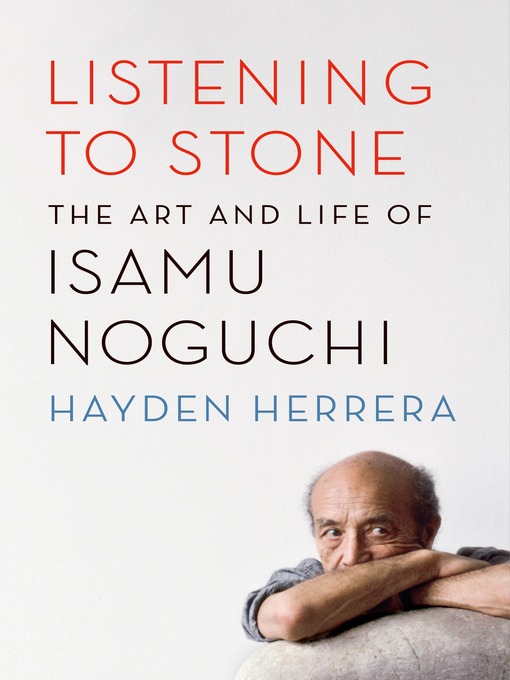
Listening to Stone
The Art and Life of Isamu Noguchi
کتاب های مرتبط
- اطلاعات
- نقد و بررسی
- دیدگاه کاربران
نقد و بررسی

December 15, 2014
Herrera (Arshile Gorky) delves into the details of the life of influential and enigmatic American sculptor Isamu Noguchi in this thorough and solid biography. Noguchi was born in Los Angeles in 1904, to an American mother and a Japanese father, the poet Yone Noguchi, who abandoned them before Noguchi was born. Herrera reveals how Noguchi’s identity as half-Japanese and half-American shaped his identity as an artist. Describing Noguchi’s career from his itinerant youth in LA and Japan to his embattled redesign of Miami’s Bayfront Park, Herrera leaves no stone unturned. This critical biography relies extensively on Noguchi’s writings and letters, but Herrera’s expertise and insight illuminate Noguchi’s evolving creative process, as well as the full scope of his personal relationships. In short chapters, Herrera walks readers through every phase of Noguchi’s life, including his affair with Frida Kahlo, the design of his iconic table, his collaborations with choreographer Martha Graham, his time at a Japanese-American internment camp in Arizona during WWII, and his creation of the Noguchi Museum in Queens, New York. Herrera adroitly shows that Noguchi was more than just a sculptor—he was a skilled craftsman, a heartbreaker, and a philosopher of design. This biography carves a smooth portrait of one of the most prolific and original artists of the 20th century. 132 illus. Agent: Sarah Chalfant, Wylie Agency.

January 15, 2015
A comprehensive biography of a sculptor of stone and space.Art critic Robert Hughes called Isamu Noguchi (1904-1988) "the pre-eminent American sculptor...the chief living heir, not only to his teacher [Constantin] Brancusi, but also to the classical Japanese feeling for material and nature." In this meticulously researched biography, Herrera (Joan Snyder, 2005, etc.) chronicles the long, productive career of the acclaimed 20th-century modernist. Born to an unconventional American mother and a Japanese father, a famous poet who neglected him, Noguchi spent his early childhood in Japan; at 13, his mother sent him to school in America, alone. "Banished" to another culture, he claimed throughout his life that dual identity made him feel like an outsider. As an artist, he drew on both cultures, and his precocious talent attracted teachers and mentors: Brancusi, for whom he worked in Paris; and Buckminster Fuller, who taught Noguchi about "the new technology of space and structures." Although Noguchi began his career making busts of celebrities (Thornton Wilder, George Gershwin, Lincoln Kirstein), he soon moved to sculpture, stage sets (he designed for Martha Graham for decades), and public plazas and gardens (for UNESCO, Yale's Beinecke Library and others), earning a reputation "as a sculptor of space." Herrera allows colleagues and lovers to characterize Noguchi's personality. "He was elegant and flirtatious," a close woman friend disclosed. "He was a seducer and a charmer." He pursued women who were usually decades younger and dazzled by his attentions and his fame; he married one, an actress, but that relationship ended in divorce after a few years. Short-tempered and egotistical, he could be difficult. One colleague said he was "stubborn as a mule" and an astute politician. "Noguchi was a genius in knowing how to use people," said another. Although reticent about putting forth her own insights about her subject's mind and heart, Herrera gives readers an ample, thorough analysis of his estimable art.
COPYRIGHT(2015) Kirkus Reviews, ALL RIGHTS RESERVED.

Starred review from February 1, 2015
The phenomenally gifted and versatile sculptor Isamu Noguchi (190488), the American-born son of an Irish American mother and a Japanese father, felt like an outsider wherever he went. Leonie Gilmour met poet Yone Noguchi via a newspaper ad. She was looking for work. He needed help with his English. Not only didn't Yone marry Leonie, he returned to Japan while she was pregnant, and when Leonie followed several years later, she discovered that he had another family. Young Noguchi, a nature-loving prodigy, thrived nonetheless. Sent back to the States alone at age 13, as tenacious as he was talented, Noguchi endured extreme hardships until attaining success and social standing, first with portraiture, then by creating an eloquent form of modernism that fused tradition and innovation, East and West. A passionate stone carver and a constant traveler with a notoriously complicated love life, Noguchi constructed, with tremendous vision, skill, and turmoil, dynamic outdoor installations all around the world. But as Herrera, the biographer, too, of Arshile Gorky and Frida Kahlo, so sensitively illuminates and assiduously documents, his mixed heritage and illegitimate birth caused him endless anguish, including time in a WWII Japanese American internment camp. Herrera tells Noguchi's astounding, many-chaptered story of unstoppable creative energy, fame, and perpetual alienation with thrilling narrative drive and deep perception and reinvigorates appreciation for Noguchi's searching and evocative art.(Reprinted with permission of Booklist, copyright 2015, American Library Association.)

November 1, 2014
Herrera draws on celebrated modern sculptor Isamu Noguchi's personal correspondence and interviews with other artists, as well as Noguchi's patrons, assistants, and lovers, to clarify not just his art but his larger life. That included friendship with Arshile Gorky and an affair with Frida Kahlo, both of whom were subjects of Herrera's previous works.
Copyright 2014 Library Journal, LLC Used with permission.

























دیدگاه کاربران